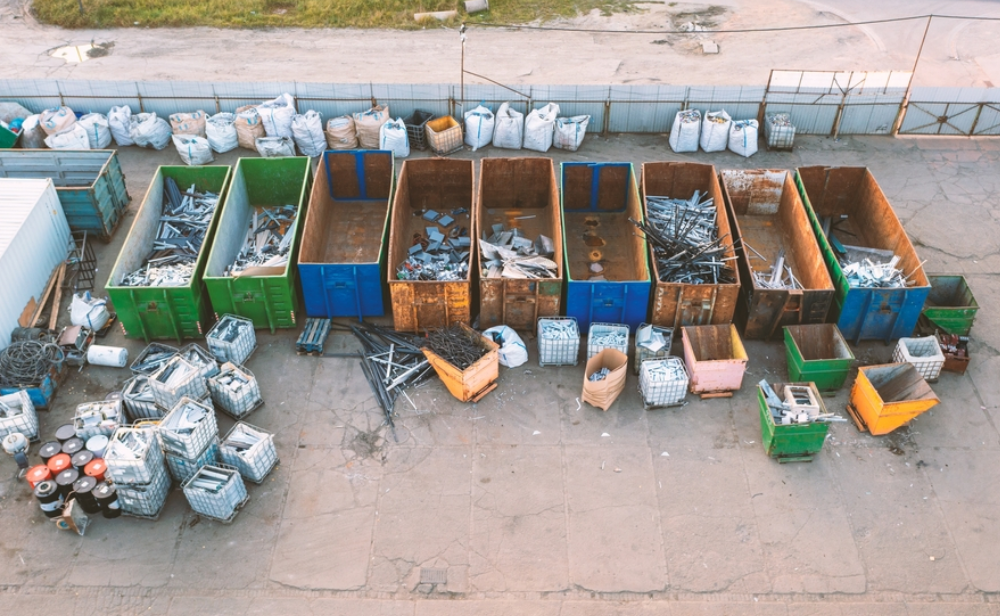
Metal is an excellent material for various building applications, but selecting the right metal for each situation is critical to ensure proper functionality. Given the incredible types of metals and alloy options available today, the decision is not always easy. The best way to navigate the metal selection process is to consider your project’s needs and compare them to the properties of each candidate metal.
Selecting The Right Types of Metal
Take the time to carefully consider the specific application requirements and environmental issues your product may face before selecting materials for your project. Consider material properties like machinability, weldability, and others.
Tensile Strength: Tensile strength is the amount of force that a metal can withstand without snapping. This is an important consideration, especially for projects subjected to significant forces.
Weldability: Some metals are more easily welded than others. If you choose a difficult metal to weld, the manufacturing process will take more time and expertise, which may affect your timeline and budget.
Machinability: The ease with which a metal can be cut with a blade is machinability. A less machinable metal may necessitate the use of specialized tools, increasing your cost and lengthening your lead time.
Ductility and Formability: Ductility and formability are two further elements that influence the metalworking process. These characteristics govern the shapes that metal can take. A metal with poor flexibility is difficult to mold into a wire, and metal with low ductility cannot be bent without cracking.
Versatility: Is your chosen metal adaptable enough to deal with other materials if your project requires it? You don’t want to select a metal that may cause complications during project fabrication.
A project made entirely of the metal you select is a different matter. Similar interactions with other materials are not a concern. However, if you’re constructing a house, you’ll want to choose a long-lasting, sturdy metal, easy to deal with and versatile.
Cost: Depending on the job, you may require the most expensive metal, such as one with great corrosion resistance and optimal tensile strength. If you’re making something simple and less important, you might be able to get away with a less expensive metal.
A thorough examination of these qualities will enable you to choose from different metals that can be fashioned to perform exactly as expected.
Most Common Types of Metals
There are different types of metals to consider in your project, ranging from aluminum to stainless steel and beyond. The most frequent metals you’ll encounter in your search for the suitable material are briefly discussed below.
- Steel
Steel is an iron alloy enriched with about 1% carbon and is generally free of the impurities and residues found in iron. While iron is stronger than other metals, it is also very heavy, dense, and prone to corrosion. For these reasons, purely iron structures can be difficult to construct and maintain. Adding carbon to iron mitigates these vulnerabilities, but it also strengthens the material. Furthermore, steel has a relatively high strength-to-weight ratio compared to other metals, allowing for the production of small but strong steel parts.
- Iron
Iron is a highly abundant and widely used metal, accounting for approximately 5% of the Earth’s crust and ranking as the sixth most basic component in the universe. Unalloyed iron is a reactive element that quickly reacts with oxygen in the air to form iron oxide. It is frequently mixed with other components to make steel more stable. As a heavy metal, iron provides rigidity and lessens vibrations, which is why it is frequently used in the production of heavy equipment frames and foundations.
- Aluminum
Aluminum, generated from its source, bauxite, is a very durable, light-weight, and corrosion-resistant metal. Aluminum’s processability, electrical conductivity, and resistance to magnetizing made it popular in the nineteenth century. It’s the most prevalent non-ferrous metal on the planet, and it’s known because of its adaptability and capacity to establish alloys with practically any other metal. Aluminum has a high strength-to-weight ratio, and while it does not rust, metal does oxidize and corrode when exposed to salt. It has a wide range of applications, from cans to household appliances to airplanes.
- Copper
Copper is among the different metals with excellent corrosion resistance, particularly to various corrosive chemicals. It is also moldable, malleable, and flexible, allowing for a wide range of applications in the electronics, construction, aviation, and automotive sectors. Copper is used in solar panels, air conditioners, converters, motors, and wires, among other things, in these applications. Copper also possesses antibacterial qualities that can be beneficial in the food and beverage and the medical industries.
- Brass
Brass, like copper, resists oxidation from various chemicals and has a nice finish, making it a good choice where appearance is important. Brass’ properties change based on the ratio of its ingredients as a zinc and copper alloy.
Conclusion
It takes time to evaluate different types of metals for their benefits and drawbacks, but it is necessary. Our site has made the process easier for you by explaining the benefits of each material, allowing you to choose the best metal for your job and finances.
